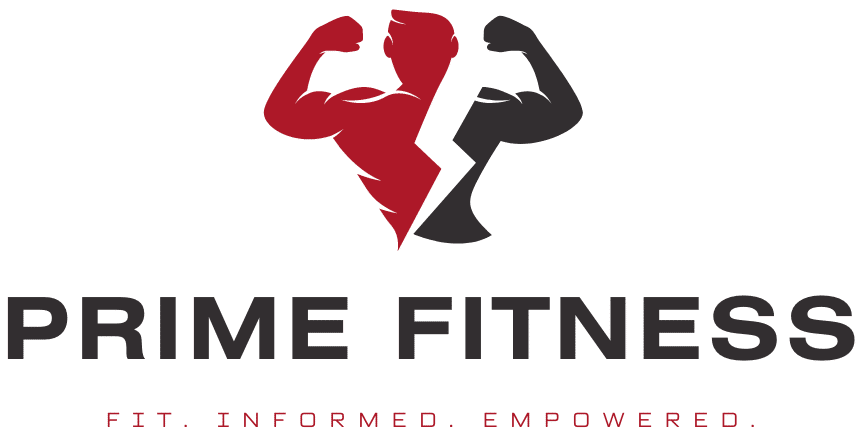In this article, we’ll explore the question of whether weight loss is achievable through exercise alone. We’ll discuss the importance of exercise in managing weight and its impact on the body. Additionally, we’ll take a closer look at the role of diet in conjunction with exercise for effective weight loss. By the end of this article, you’ll have a better understanding of how exercise contributes to weight loss and the other factors that come into play. The answers may surprise you! Weight loss is a common goal for many individuals, and it often raises the question of whether exercise alone is enough to achieve this goal. While exercise has numerous benefits for overall health and well-being, its role in weight loss should be understood in relation to other factors, such as nutrition and lifestyle choices. In this article, we will explore the role of exercise in weight loss, the benefits it provides, and the challenges that may arise. Additionally, we will discuss how to create an exercise routine for weight loss, factors affecting weight loss with exercise, exercise safety and precautions, and long-term weight management.

The Role of Exercise in Weight Loss
Exercise plays a crucial role in weight loss by helping to burn calories. When you engage in physical activity, your body burns calories to fuel your movements. This calorie burning is essential for weight loss, as it creates a calorie deficit when you burn more calories than you consume. However, it is important to note that exercise alone may not result in significant weight loss if proper nutrition is not also a part of the equation.
Exercise and Calorie Burning
The amount of calories burned during exercise depends on various factors, including the intensity and duration of the activity, as well as your individual characteristics such as weight, age, and gender. High-intensity activities such as running or swimming will typically result in a higher calorie burn compared to low-intensity activities such as walking. However, any form of exercise can contribute to weight loss by increasing your overall energy expenditure.
Types of Exercise for Weight Loss
When it comes to weight loss, a combination of aerobic exercise and strength training is typically recommended. Aerobic exercise, such as running, cycling, or dancing, increases your heart rate and helps burn calories. Strength training, on the other hand, helps build lean muscle mass, which can contribute to an increased metabolism and assist in weight loss. Incorporating a mixture of both types of exercise into your routine can provide well-rounded benefits for weight loss.
The Impact of Exercise on Metabolism
Exercise not only helps to burn calories during the activity itself, but it can also have long-term effects on your metabolism. Regular exercise can increase your metabolic rate, meaning your body becomes more efficient at burning calories even at rest. This increase in metabolism can contribute to weight loss by helping you burn more calories throughout the day. However, it is important to note that the impact of exercise on metabolism varies from person to person and can be influenced by factors such as genetics and individual differences in metabolism.
Creating an Exercise Routine for Weight Loss
To maximize the effectiveness of exercise for weight loss, it is important to create an exercise routine that is tailored to your needs and goals. Here are some steps to consider when creating your exercise routine:
Setting Realistic Goals
Before beginning any weight loss journey, it is important to set realistic goals. While it may be tempting to aim for rapid and drastic weight loss, it is generally more sustainable and healthier to aim for gradual and steady progress. Set specific, measurable, attainable, relevant, and time-bound (SMART) goals that align with your overall health and wellness objectives.
Choosing the Right Exercises
When it comes to weight loss, incorporating a variety of exercises can be beneficial. As mentioned earlier, a combination of aerobic exercise and strength training is generally recommended. However, it is important to choose exercises that you enjoy and that are suitable for your fitness level. This will help you stay motivated and make exercise more enjoyable.
Creating a Schedule
To achieve weight loss goals, consistency is key. Creating a schedule that includes dedicated exercise sessions is essential. Aim to exercise for at least 150 minutes per week, or approximately 30 minutes a day, five days a week. Additionally, spacing out your workouts throughout the week can help prevent burnout and reduce the risk of injury.
Benefits of Exercise for Weight Loss
In addition to its calorie-burning effects, exercise provides numerous benefits for weight loss. Here are a few key advantages:
Increased Fat Burning
Engaging in regular physical activity can help your body become more efficient at burning fat. As you build lean muscle mass through strength training, your body’s ability to burn fat increases. This can lead to better weight loss results and a more toned physique.
Improved Cardiovascular Health
Regular exercise can significantly improve cardiovascular health. It strengthens the heart and improves blood circulation, reducing the risk of heart disease and related conditions. Additionally, cardiovascular exercise, such as running or swimming, contributes to weight loss by increasing calorie burn and improving overall fitness levels.
Building Lean Muscle Mass
Strength training exercises, such as lifting weights or using resistance bands, can help build lean muscle mass. This not only contributes to a toned appearance, but it can also increase your metabolism. Muscle is more metabolically active than fat, meaning it burns more calories at rest. By increasing your muscle mass through strength training, you can boost your metabolism and support weight loss efforts.
Combining Exercise with a Balanced Diet
While exercise is an important component of weight loss, it is essential to pair it with a balanced and nutritious diet. Here are some considerations when combining exercise with a healthy eating plan:
The Importance of Nutrition
Proper nutrition plays a vital role in weight loss. To create a calorie deficit, you must consume fewer calories than you burn through exercise and daily activities. This is where a balanced diet comes into play, as it provides the necessary nutrients while still allowing for a calorie deficit. Aim to include a variety of fruits, vegetables, lean proteins, whole grains, and healthy fats in your diet.
Choosing Healthy, Nutritious Foods
When selecting foods for weight loss, focus on nutrient-dense options. These are foods that are high in essential nutrients but relatively low in calories. Examples include leafy greens, lean proteins, and whole grains. Additionally, aim to limit your intake of processed foods, sugary drinks, and high-calorie snacks, as these can hinder your weight loss efforts.
Meal Planning for Weight Loss
Meal planning can be a useful tool for weight loss, as it allows you to control portion sizes and make healthier choices. Plan your meals and snacks in advance, and include a balance of protein, carbohydrates, and healthy fats. Having healthy options readily available can help prevent impulsive food choices and support your weight loss goals.

Factors Affecting Weight Loss with Exercise
While exercise can be an effective tool for weight loss, individual factors can influence the results. Here are a few factors to consider:
Individual Differences in Metabolism
Metabolism varies from person to person and can impact weight loss results. Some individuals naturally have a higher metabolism, meaning they burn more calories at rest. On the other hand, some individuals may have a slower metabolism, which can make weight loss more challenging. It is important to understand and accept your individual metabolism while focusing on healthy habits rather than comparing yourself to others.
Genetic Factors
Genetics can also play a role in weight loss. Some individuals may be more genetically predisposed to store fat, while others may have a genetic advantage when it comes to burning calories. While genetics are a factor, they do not determine your destiny. By consistently engaging in exercise and maintaining a balanced diet, you can still achieve weight loss regardless of your genetic makeup.
Psychological Factors
Psychological factors, such as stress, emotional eating, and mindset, can influence weight loss with exercise. Emotional eating can lead to overeating and make weight loss more challenging. Additionally, stress can trigger the release of hormones that can promote fat storage. Taking steps to manage stress, practicing mindful eating, and seeking support can help overcome these psychological barriers and support weight loss efforts.
Monitoring Progress and Adjusting the Exercise Routine
Tracking your progress is essential to gauge the effectiveness of your exercise routine and make necessary adjustments. Here are some tips for monitoring your weight loss progress:
Tracking Weight Loss
Regularly weigh yourself or measure your body composition to track your progress. It is important to keep in mind that weight fluctuates naturally, so focus on long-term trends rather than short-term fluctuations. Additionally, consider tracking other metrics such as body measurements or how your clothes fit.
Making Necessary Adjustments
If you find that your weight loss has plateaued or you are not seeing the desired results, it may be necessary to make adjustments to your exercise routine. This could include increasing the intensity or duration of your workouts or incorporating new exercises to challenge your body. Consult with a fitness professional or personal trainer for guidance and support.
Seeking Professional Guidance
If you are unsure about how to create an effective exercise routine for weight loss or if you have specific health concerns, seeking professional guidance is beneficial. A certified fitness professional or registered dietitian can provide personalized recommendations and help you reach your weight loss goals safely and effectively.

Challenges and Solutions for Weight Loss with Exercise Alone
While exercise can be a powerful tool for weight loss, it is not without challenges. Here are some common challenges and solutions:
Plateaus and How to Overcome Them
Weight loss plateaus can occur when your body adapts to your exercise routine and becomes more efficient at burning calories. To overcome plateaus, consider incorporating new exercises, increasing the intensity or duration of your workouts, or changing your workout routine altogether. This can help shock your body and keep your progress on track.
Maintaining Motivation
Staying motivated throughout your weight loss journey can be challenging, especially when results may not come as quickly as desired. Setting small goals, celebrating achievements, and finding enjoyable forms of exercise can help maintain motivation. Additionally, having a support system or workout buddy can provide accountability and make exercise more enjoyable.
Dealing with Setbacks
Weight loss journeys are not always linear, and setbacks can occur. It is important to remember that setbacks are normal and part of the process. Instead of getting discouraged, use setbacks as opportunities to learn and grow. Stay positive, reevaluate your goals, and make adjustments as needed.
Exercise Safety and Precautions for Weight Loss
While exercise is generally safe for most individuals, it is important to take precautions to prevent injury and ensure overall well-being. Here are some safety tips:
Starting Slow and Gradually Increasing Intensity
If you are new to exercise or have been inactive for a while, it is important to start slow and gradually increase the intensity and duration of your workouts. This allows your body to adapt and reduces the risk of injury. Aim for a gradual progression that feels challenging but manageable.
Listening to Your Body
Pay attention to your body and listen to its signals. If you experience pain or discomfort during exercise, it is important to stop and seek medical advice if needed. Pushing through pain can lead to further injury. Rest and recovery are also important components of any exercise routine, so make sure to include regular rest days.
Avoiding Overtraining
Overtraining occurs when you push your body too hard without allowing for adequate rest and recovery. This can lead to physical and mental burnout, as well as an increased risk of injury. Incorporate rest days into your exercise routine and vary the intensity and types of exercise you engage in.

Long-Term Weight Management
Achieving sustainable weight loss involves long-term strategies and lifestyle changes. Here are some tips for long-term weight management:
Sustaining Weight Loss Results
To sustain weight loss results, it is important to maintain healthy habits and continue exercising regularly. This includes finding a balance between exercise, nutrition, and other aspects of your life. Consistency is key, so aim to make exercise and healthy eating a part of your daily routine.
Incorporating Exercise into a Healthy Lifestyle
Rather than viewing exercise as a means to an end, strive to make it a permanent part of your lifestyle. Find activities that you enjoy and make them a priority. This can include walking or biking instead of driving, taking the stairs instead of the elevator, or participating in group fitness classes. Exercise should be something you look forward to and enjoy.
Preventing Weight Regain
Weight regain can be common after a period of weight loss. To prevent this, focus on maintaining a balance between your calorie intake and expenditure. Continue to monitor your weight and adjust your exercise routine and eating habits as needed. Regularly check in with yourself and make any necessary adjustments to stay on track.
Conclusion
In conclusion, while exercise alone can contribute to weight loss, it is crucial to take a comprehensive approach that includes proper nutrition and lifestyle changes. Exercise plays a significant role in calorie burning, increasing metabolism, and building lean muscle mass. Combining exercise with a balanced diet, monitoring progress, and seeking professional guidance can maximize weight loss results. However, individual factors and challenges should be considered, and precautions should be taken to ensure safety and long-term success. By incorporating exercise into a healthy lifestyle and making sustainable choices, weight loss is possible and achievable. So lace up those sneakers, find activities you love, and embark on your weight loss journey with confidence and determination.






